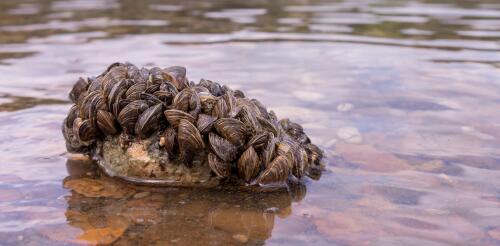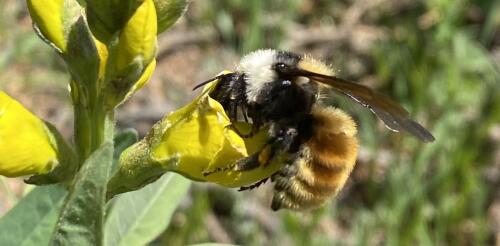Ecosystems
Invasive species – including plants, animals and fish – cause heavy damage to crops, wildlife and human health worldwide. Some prey on native species; other out-compete them for space and food or spread disease. A new United Nations report estimates the losses generated by invasives at more than US$423 billion yearly and shows that these damages have at least quadrupled in every decade since 1970. Humans regularly move animals, plants and other living species from their home areas to new locations, either accidentally or on purpose. For example, they may import plants from faraway locations to raise as crops or bring in a nonnative animal to prey on a local pest. Other invasives hitch rides in cargo or ships’ ballast water. When a species that is not native to a particular area becomes established there, reproducing quickly and causing harm, it has become invasive. These recent articles from The Conversation describe how several invasive species are causing eco...
Startling new insights into the catastrophic impact of one of the most devastating events in Earth’s history have been revealed by a team led by researchers with the USC Dornsife College of Letters, Arts and Sciences. More than deepening our understanding of the end-Triassic mass extinction, their findings offer critical lessons for today’s environmental challenges. About 200 million years ago, Earth experienced its fourth major mass extinction event. Triggered by a dramatic rise in greenhouse gases due to volcanic activity, the event led to rapid global warming and a significant shift in the planet’s biosphere, ending the Triassic period and launching the Jurassic. Many scientists now believe Earth is in the midst of another mass extinction, driven in large part by similar climate changes. Earth scientists at USC Dornsife took a unique approach to analyzing the impact of this extinction event on both ocean and land ecosystems, using a novel...
Rivers have been the lifeblood of human civilization throughout history, and yet we know surprisingly little about what lives in many of them – including the giant creatures that prowl their depths. While we know the biggest animal in the ocean is the blue whale and the largest marine fish is the whale shark, the identity of the world’s largest freshwater fish species long remained a mystery. Until 2022, that is, when fishers in Cambodia caught a giant freshwater stingray in the remote reaches of the Mekong River. Weighing an astounding 661 pounds, the stingray surpassed by 15 pounds a giant catfish caught in Thailand in 2005 that had previously been considered the unofficial record holder. The discovery marked a milestone in fish biologist Zeb Hogan’s more than two-decade quest to study and protect giant freshwater fish. As a group, these megafish are among the most endangered animals on the planet. The world’s largest fresh...
Imagine a bee crawling into a bright yellow flower. This simple interaction is something you may have witnessed many times. It is also a crucial sign of the health of our environment – and one I’ve devoted hundreds of hours of field work observing. Interactions between plants and pollinators help plants reproduce, support pollinator species like bees, butterflies and flies, and benefit both agricultural and natural ecosystems. These one-on-one interactions occur within complex networks of plants and pollinators. In my lab at the University of Colorado Boulder, we’re interested in how these networks change over time and how they respond to stressors like climate change. My team emphasizes long-term data collection in hopes of revealing trends that would otherwise be unnoticed. Working at Elk Meadow Ten years ago, I began working in Elk Meadow, which is located at 9,500 feet (or 2,900 meters) elevation at the University of Colorado’s Mountain Resear...
As wildfire risk rises in the West, wildland firefighters and officials are keeping a closer eye on the high mountains – regions once considered too wet to burn. The growing fire risk in these areas became startling clear in 2020, when Colorado’s East Troublesome Fire burned up and over the Continental Divide to become the state’s second-largest fire on record. The following year, California’s Dixie Fire became the first on record to burn across the Sierra Nevada’s crest and start down the other side. We study wildfire behavior as climate scientists and engineers. In a new study, we show that fire risk has intensified in every region across the West over the past four decades, but the sharpest upward trends are in the high elevations. In 2020, Colorado’s East Troublesome fire jumped the Continental Divide. AP Photo/David Zalubowski High mountain fires can create...




